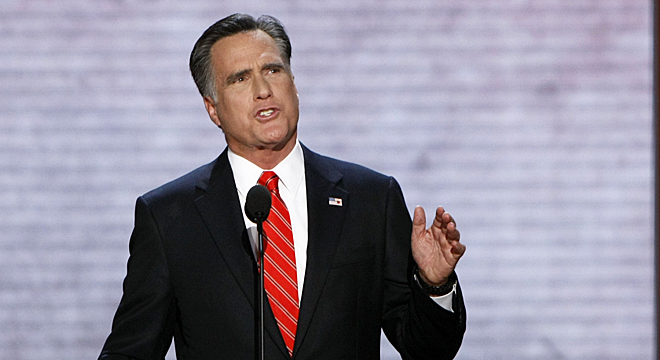Under pressure to provide more details about his tax reform proposal, Mitt Romney floated an idea Tuesday to help fill a revenue hole in his plan.
“As an option you could say everybody’s going to get up to a $17,000 deduction; and you could use your charitable deduction, your home mortgage deduction, or others — your healthcare deduction. And you can fill that bucket, if you will, that $17,000 bucket that way,” Romney told a Fox affiliate in Denver. “And higher income people might have a lower number.”
In other words, cap the total amount individuals can benefit from tax loopholes.
But while some tax policy experts like the idea in principle it suffers from at least one big political problem: though it would hit high net-worth people hardest, it would still require raising taxes on some middle class Americans to cover the cost of his proposal to cut everyone’s tax rates by 20 percent.
“It goes back to the same problem that we’ve raised,” says Howard Gleckman, an expert at the non-partisan Tax Policy Center, which famously concluded Romney’s tax plan would require raising taxes on middle-income earners. “He’s promised all these things and he can’t do them all. In order for him to cover the cost of his tax cut without adding to the deficit, he’d have to find a way to raise taxes on middle income people or people making less than $200,000 a year. This might do that, but without way more details than he’s providing there’s no way to know who gets hit and how much they get hit by.”
Romney’s deduction cap would help fill the revenue hole he’d create by slashing tax rates. And it would help him avoid the daunting politics of eliminating specific tax deductions. But it would still almost certainly violate the Republican nominee’s pledge not to raise taxes at all on middle-income earners. That’s because some middle class people who benefit disproportionately from existing tax deductions might end up paying more than they do now. But also because eliminating deductions for higher income people doesn’t raise enough money to pay for reducing their income tax rates by 20 percent. And that means the plan can’t be revenue neutral without raising taxes on middle-income earners.
“This would generate a lot of revenue,” Gleckman said. “It would ask some people to pay more clearly, but whether or not it would hit the middle class depends on what you define as middle class — whether you believe someone making $199,000 is middle class.”
Bob Greenstein, president of the liberal-leaning Center on Budget and Policy Priorities, acknowledged the virtues of the deduction-cap principle when it was proposed by Sen. Pat Toomey (R-PA) during deficit reduction negotiations last year.
“The proposed dollar cap on itemized deductions is a potential step forward,” Greenstein wrote. “One aspect of Senator Toomey’s plan — his proposal to place a dollar cap on itemized deductions — represents an advance over some other proposals to impose a limit on the overall benefits that tax expenditures can provide to a taxpayer. It is more specific, could raise significant revenue, and could do so in a progressive manner.”










